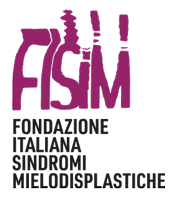The term “myelodysplasia” comes from the Greek words: “myelo”, ie blood cells, and “dysplasia”, ie abnormal development or growth.
Myelodysplastic syndromes (MDS) are a heterogeneous group of blood pathologies where bone marrow cells can not become perfect and healthy cells but stop at an immature stage. The bone marrow therefore fails to produce enough red blood cells, white blood cells or healthy platelets.
These cells that remain at an immature stage are called “blasts”
The incidence of this disease in Europe is about 8 people per 100,000 inhabitants. It is a disease affecting mainly elderly people: over 70, people affected by MDS are about 35 people per 100,000 inhabitants.
Most experts agree that myelodysplastic syndromes are a type of bone and bone marrow cancer that can occur in either chronic or aggressive form.
It is not a hereditary or contagious pathology.
Myelodysplastic syndromes are defined as “clonal” diseases because the development of the disease is due to a single cell that, escaping control mechanisms, multiplies which results in the production of altered cells in form and function that receive the “defect” from the cell progenitor.
The symptoms and the development change considerably from patient to patient, depending on the type of affected blood cell: there may be anemia (caused by red blood cell reduction), neutropenia (when neutrophils decrease) and / or thrombocytopenia (ie platelet reduction).
In the most serious cases MDS can evolve in acute myeloid leukemia.


